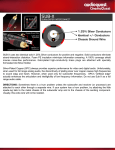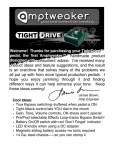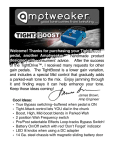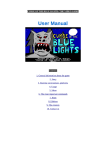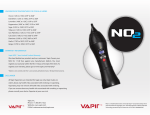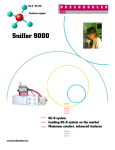Download Zorgtaver user`s manual. About the Zorgtaver sound: A
Transcript
Zorgtaver user's manual. Please read carefully this manual, there's some hidden features you must know and important information to help you protect your ears. Please feed the pedal with a 9v supply. About the Zorgtaver sound: The Zorgtaver has been designed to be a fat and acid octaver. It can generate smooth octaves, but also edgy, raw, saturated octaves, or 8bits-like sounds, and be pretty bad. The key is to experiement in between differents mix and filtering of the octaves. The Zorgtaver is good for any instrument: bass, guitar, sytnhs, flutes... Oh, you should know that the Zorgtaver is 100% analog. Thus there might be some slight bad triggering with low frequency input. Remember: You'll get the best triggering with a clean sound from the neck pickup on stringed instruments. A loop??? WTF!? So you'll get the best triggering with a clean sound. But what if you want to add octaves to... let's say... a fuzz sound!? This is what's the loop is for: plug you favorite fuzz in the loop and you'll be able to trig on a clean sound AND add the octave to the sound out of your fuzz. But there's a drawback: your fuzz will be available only for the Zorgctaver and will be bypassed when bypassing the zorgtaver... What are these knobs for? VOLUME: Sets the overall volume of the pedal. TONE: This is a low pass filter, it will smooth the sound or remove the treble. It affects only the sum of octave and not the dry signal. TRIG: adjust the trigging sensibility to your pickups/input with this knob. Weird Use you ears to get what you like. Remember triggering is better with a clean neck sound and can be shitty with low frequencies notes. Then the others four knobs are used to mix the octaves and dry signal together: DRY: Set the amount of dry signal in the mix. If there's a pedal in the zorgtaver's loop, the dry sound is what come out of it. If there's no pedal, the dry sound is what arrives at the input of the zorgtaver SQ: Set the amount of square signal in the mix. Think of the square signal as a heavily distorted version of the input signal (I mean NOT the one from the loop). -1: Set the amount of the one octave below signal. -2: Set the amount of the two octaves below signal. -1LPF, -2LFP, SLPF switches: these switches toggle a low pass filter on each one of the 3 corresponding signals. The thing is, the square and octaves are square signals, and thus can be really rich in harmonics: the sound is fat yet can be very nasty. Turning the LPFs on will smooth the sound (The signal will be almost a triangle). Classic octavers sounds are achieved with the LPFs on.


